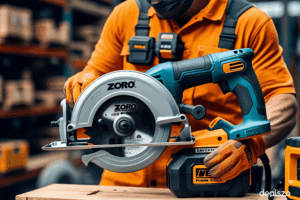Stress, physical pain, and mental fatigue can weigh heavily on everyday life. That’s why more people are turning to body massage therapy—a natural and effective way to reset both the mind and muscles. This hands-on approach not only helps to reduce discomfort but also improves blood flow, calms the nervous system, and supports long-term wellness.
Whether you’re new to massage or considering it as a regular part of your self-care routine, it helps to understand what it offers, what types are available, and how to get the most out of each session.
What Is Body Massage Therapy?
Body massage therapy is a hands-on treatment technique that uses pressure, movement, and touch to manipulate muscles and soft tissues. The goal is to reduce tension, improve circulation, and support both mental and physical well-being. Massage can target specific problem areas or provide full-body relaxation, depending on the technique and the client’s goals. This practice dates back thousands of years and has roots in cultures across the globe. Today, it’s widely used by wellness professionals, athletes, and individuals seeking relief from daily stress or physical discomfort.
Key Benefits of Massage for the Body and Mind
Massage therapy is more than just a relaxing experience—it offers real physical and mental benefits. These improvements can be felt almost immediately and often last well beyond the session.
- Muscle Relief and Flexibility
Massage helps reduce muscle tightness, knots, and tension caused by overuse, poor posture, or repetitive movements. It can improve flexibility and range of motion by loosening stiff muscles and connective tissue.
-
Stress Reduction
Massage therapy supports the nervous system by lowering levels of cortisol, the hormone associated with stress. It also promotes the release of serotonin and dopamine—feel-good chemicals that improve mood and reduce anxiety.
-
Better Sleep Quality
By calming the mind and relaxing the muscles, massage can lead to deeper, more restful sleep. Many people find they sleep better after a session and report fewer sleep disruptions.
-
Improved Circulation
Massage encourages healthy blood flow, which helps deliver oxygen and nutrients to tissues while aiding in the removal of metabolic waste. This improved circulation also supports healing and reduces inflammation.
- Boosted Immunity
Regular sessions have been shown to increase white blood cell counts, which support the body’s defense system. This makes it easier for your body to fight off illness and stay healthy.
Types of Massage Techniques to Explore
There are various types of massage available, each offering unique benefits. Choosing the right one depends on your goals and comfort level.
Swedish Massage
This is one of the most common forms, ideal for relaxation and general muscle tension. It uses long, flowing strokes with gentle pressure to soothe the body and mind.
Deep Tissue Massage
For chronic muscle tension or recovery from injury, deep tissue techniques use slower, more forceful strokes to reach deeper muscle layers. It can be intense but highly effective for pain relief.
Sports Massage
Designed for athletes or physically active individuals, this type focuses on areas under stress due to repetitive motion. It’s great for injury prevention and recovery.
Trigger Point Therapy
This targets small, tight knots within muscle tissue. Pressure is applied to specific trigger points to release pain and restore normal function.
Prenatal Massage
Tailored to the needs of pregnant individuals, this technique helps ease back pain, reduce swelling, and provide comfort during all stages of pregnancy.
Hot Stone Massage
Smooth, heated stones are used to loosen muscles, making it easier for the therapist to perform deeper work. It’s relaxing and effective for chronic muscle tension.
How to Prepare for a Massage Session
Getting the most out of your massage experience starts with preparation. Before your appointment, stay well-hydrated, avoid heavy meals, and arrive early to relax before the session begins.
What to Expect:
- The therapist will ask questions about your health history and goals.
- You’ll be shown the treatment area and given privacy to undress to your comfort level.
- Massage is usually done with oils or lotions, and only the area being worked on is exposed.
- Communication is key—let your therapist know if the pressure is too light or too strong.
After your session, it’s normal to feel relaxed, sleepy, or even slightly sore. Drink water, rest if possible, and allow your body time to adjust.
Conclusion
Body massage therapy is more than just a relaxing experience—it’s a proven method for improving physical health and mental clarity. From easing sore muscles and lowering stress to boosting sleep and immune health, the benefits are wide-reaching. With many techniques to choose from and professional support available, it’s easier than ever to make massage part of your regular wellness routine.
If you’ve been feeling tense, tired, or overwhelmed, now might be the time to try a session. A well-planned massage can bring noticeable change—and once you feel the difference, you’ll understand why so many people keep coming back for more.






